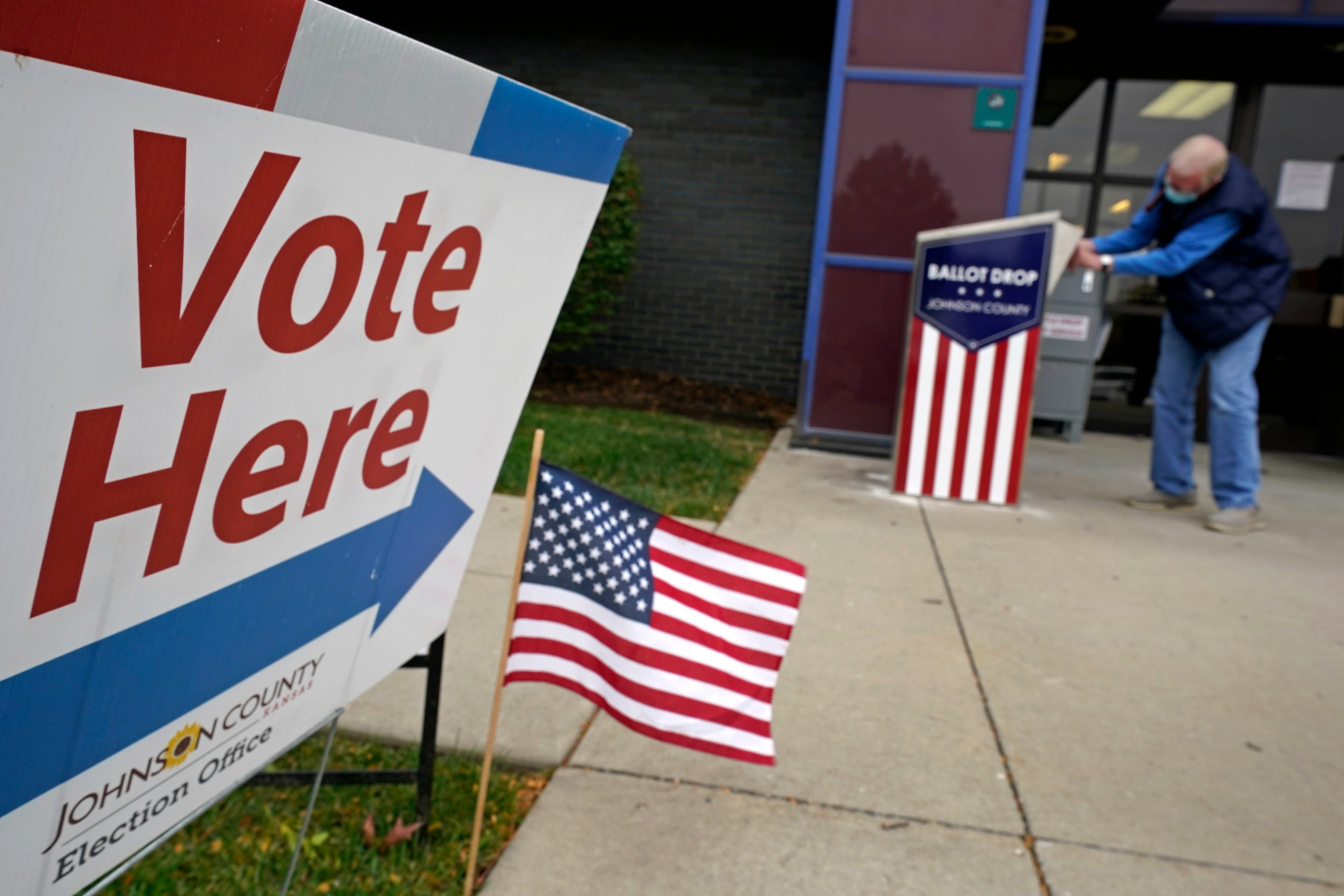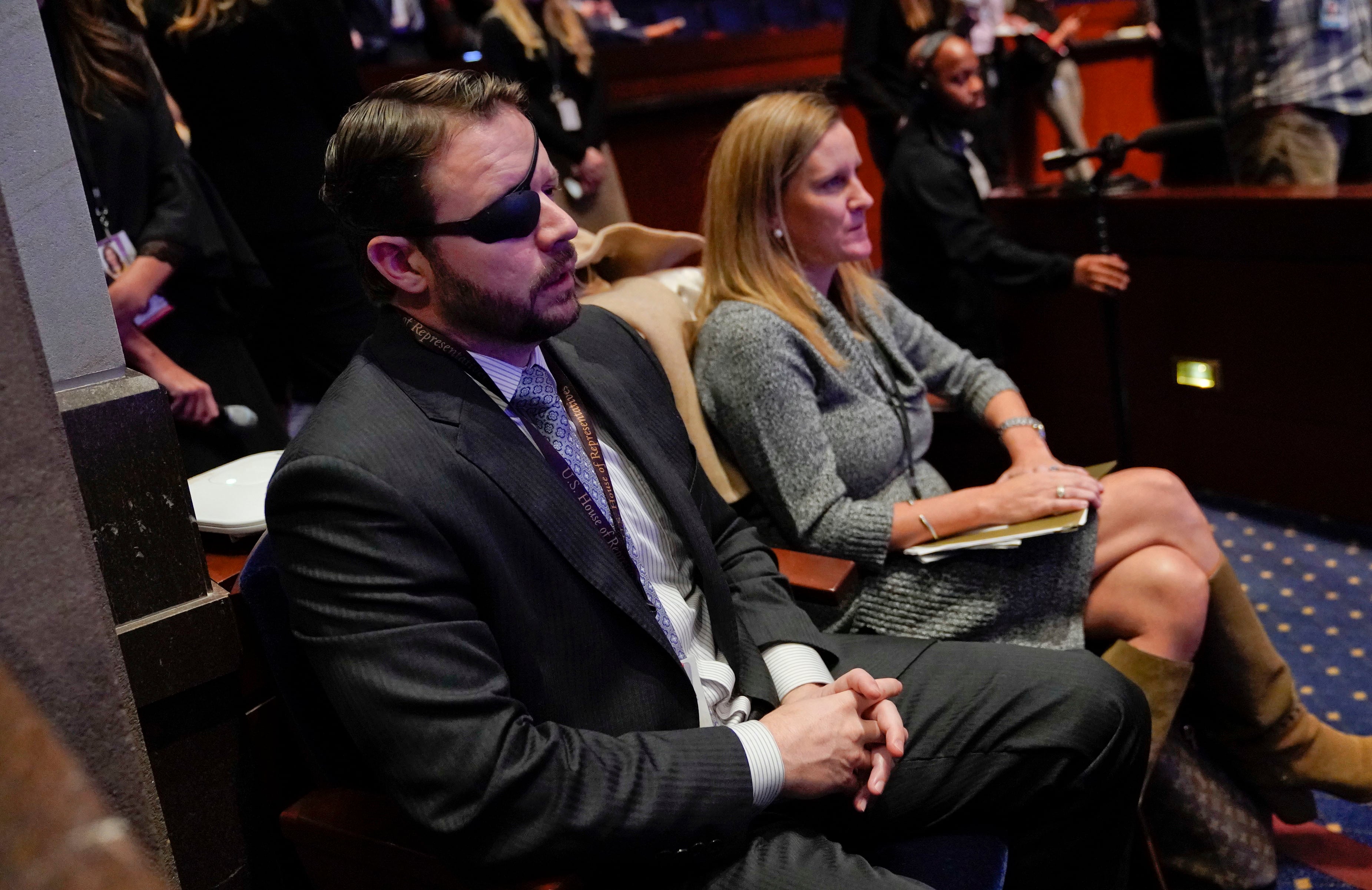Twice as many women veterans are running for Congress this year than did in 2018, but the overall number of veterans serving in the House and Senate is likely to drop again this election cycle.
So far this year, 163 veterans have won primaries for House seats and 18 more for Senate seats. The 182 veterans potentially up for election to Congress is an increase of about 5 percent from two years ago.
But officials from The Veterans Campaign, a non-partisan which trains veterans to run for office and work in political strategy fields, said even with the boost in candidates, the number of veterans actually elected to office is unlikely to grow significantly in 2021, if at all. That’s because many of the races feature established incumbents or sit in districts heavily weighted toward one political party.
RELATED

“So that means we will probably see a decrease in the total numbers again next year,” said Seth Lynn, director of The Veterans Campaign and an adjunct professor of public leadership at the University of San Francisco. “I still expect another small dip in veterans.”
At the start of the current Congress, 77 of the 435 House members and 19 of the 100 Senate members had military experience in their backgrounds. The number has since gone down with retirements and other departures.
The 96 total veteran lawmakers — less than one in five members of Congress — stands in stark contrast to the mid-1970s, when nearly three-fourths of the House and Senate were veterans.
Lynn and other election experts have noted that veterans still remain over-represented in Congress as a percentage of the U.S. population. Less than 8 percent of American citizens are serving in the military or have served. About 17 percent of Congress can boast some military service.
Leadership in office
But many advocates have argued that veterans bring with them to elected office a different set of teamwork skills and a different perspective on public service that is needed now more than ever, given the political fracturing of the country in recent years.
“There’s a respect for others and respect for the work to be done that veterans have when they are serving in Congress,” said former Defense Secretary Chuck Hagel, who served in the Senate for 12 years and has been a vocal proponent of veterans' involvement in national politics in recent years.
“When you’re in the military, you don’t try and divide. You unite. And I think that attitude has been missing in Congress of late.”
Veteran candidates remain more likely to be running as Republicans than Democrats, with 121 GOP candidates this cycle and 60 Democrats. However, Democratic women veteran candidates outnumber their Republican counterparts by a 16 to 12 margin.
Hagel, a Vietnam Veteran who served in the Army, said when he entered Congress as a Republican senator in the late 1990s, the legislature still featured a significant number of World War II veterans. He said their experience commanded respect from their colleagues, and helped smooth the path for bipartisan approaches to public policy problems.
“That’s not what is happening in Congress now,” he said. “But I think if we get more veterans elected, it is possible to reverse that attitude. It won’t be just because of veterans, but they can play a key role.”
RELATED

Signs of growth
Lynn said even though he predicts a decrease in the total number of veterans in the 117th Congress set to be seated next January, “we are seeing indicators that we could see more veterans elected in the future.”
Part of that is the sizable increase in women veterans entering campaigns in recent years.
This cycle, 24 are vying for House seats and four more in Senate races. Currently, there are only seven women veterans serving in Congress, by far the largest caucus in American political history.
“I think both (major political) parties are targeting women candidates right now, and military service has always helped candidates stand out on the campaign trail,” Lynn said. “And it may be that some of the structural barriers facing women candidates may not be the same for women veterans who decide to run for office.”
In addition, the average age of veterans in Congress has dropped dramatically in recent years. As veterans from the Korean and Vietnam War eras have retired, they have been replaced (albeit in smaller numbers) with veterans in their 30s and 40s who served during the Iraq and Afghanistan War eras.
Of the 181 veterans running for office this year, 42 served in the 1970s or earlier, the majority of them incumbents. On the other side, 115 had some service after 2000, the majority of them challengers.
Lynn said as those younger veterans reach Congress, they’ll set a new foundation of incumbents that could help slowly raise the overall number of veteran lawmakers in coming election cycles.
“It’s never going to be at the levels that it was, when much of the country served (during the Vietnam era),” he said. “But until recently, the older members of Congress were more likely to be veterans than the younger members. Now it’s the reverse.”
The fate of those veteran candidates is unlikely to be clear the day after the Nov. 3 election, because of a record number of mail-in votes cast across the country in response to the ongoing coronavirus pandemic. State laws vary on time frames for counting those ballots and finalizing election results.
Leo covers Congress, Veterans Affairs and the White House for Military Times. He has covered Washington, D.C. since 2004, focusing on military personnel and veterans policies. His work has earned numerous honors, including a 2009 Polk award, a 2010 National Headliner Award, the IAVA Leadership in Journalism award and the VFW News Media award.





